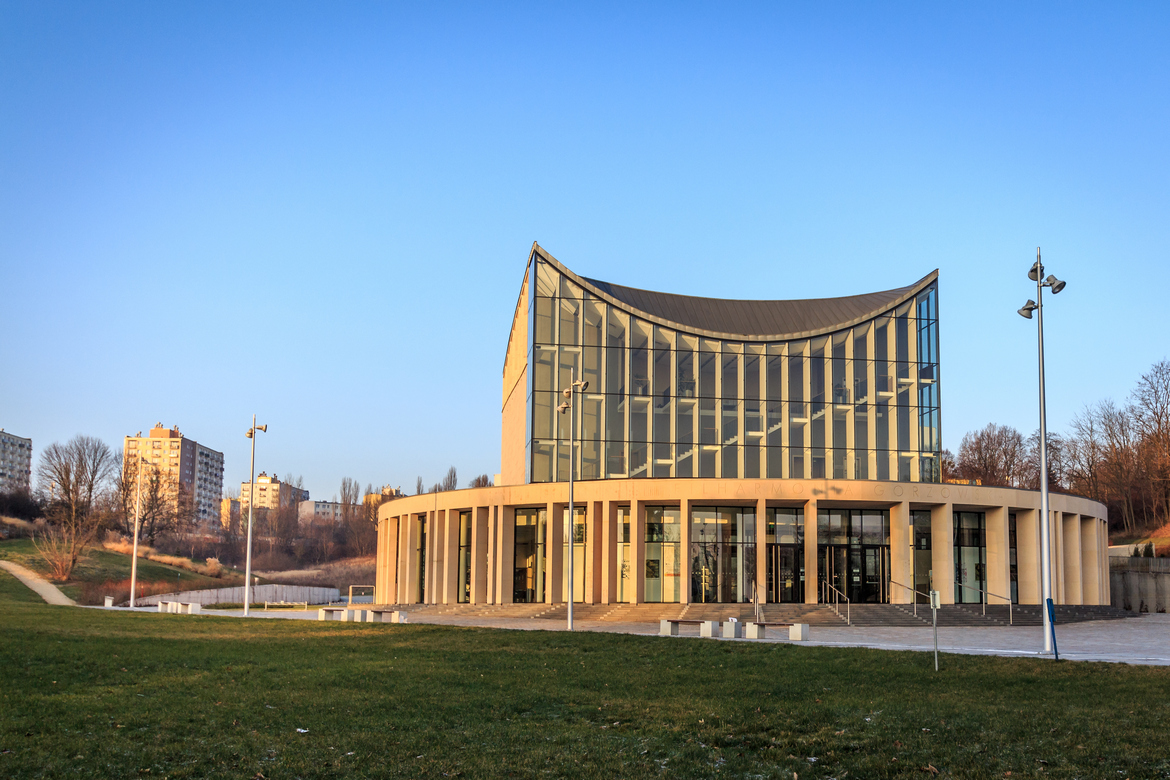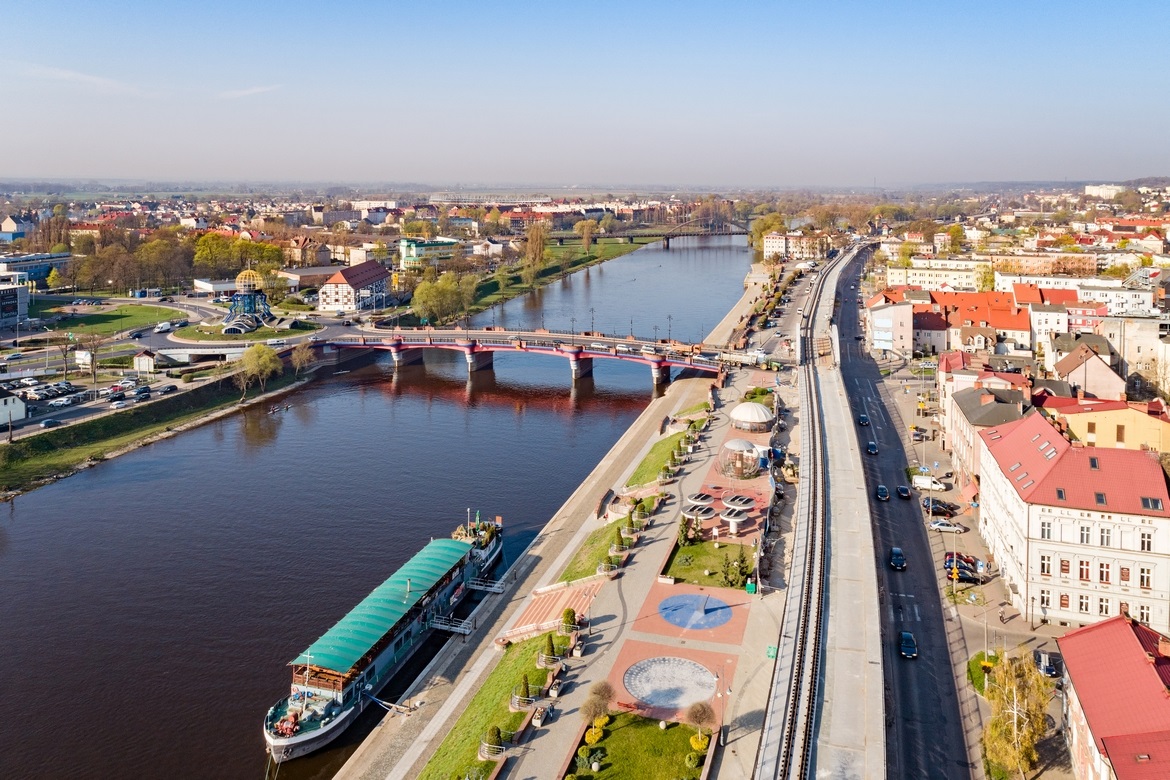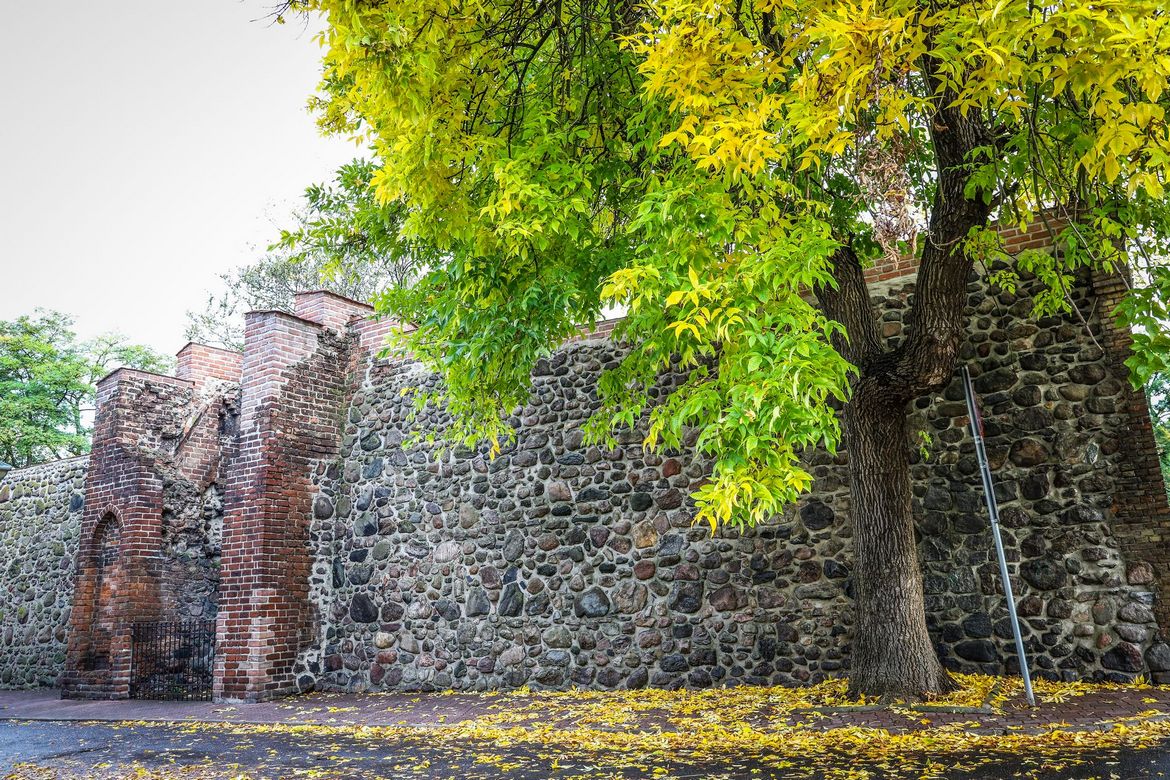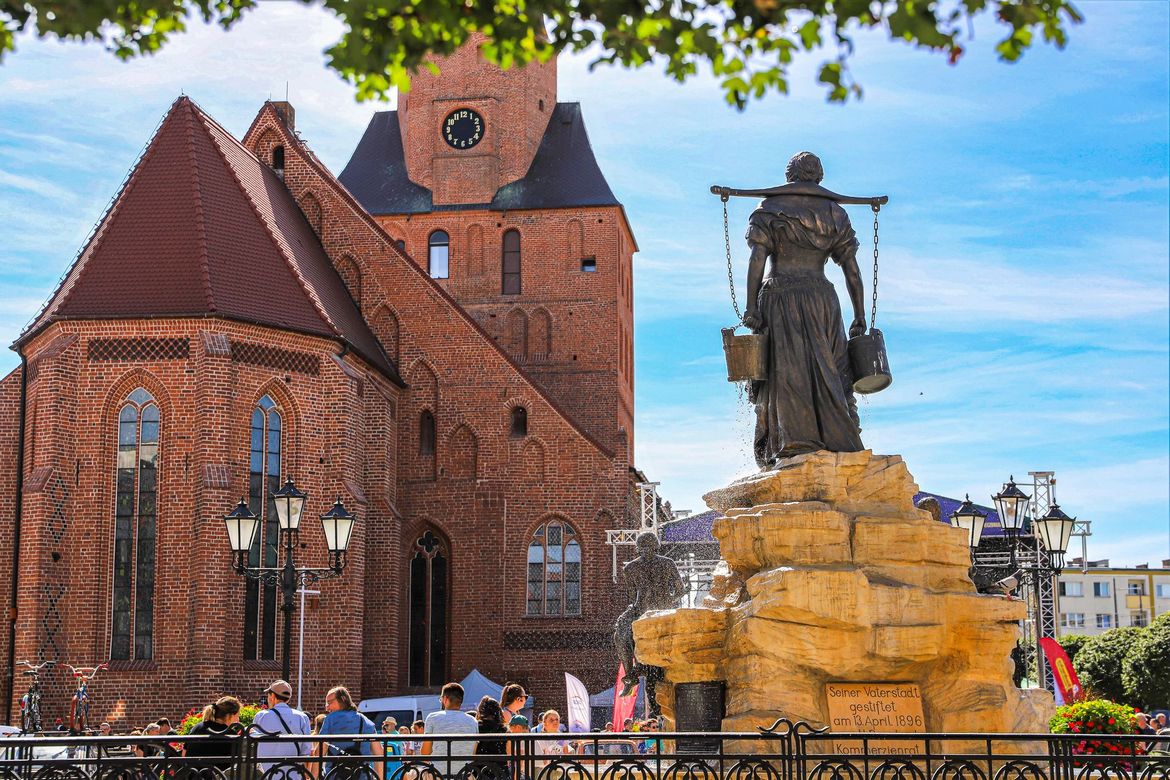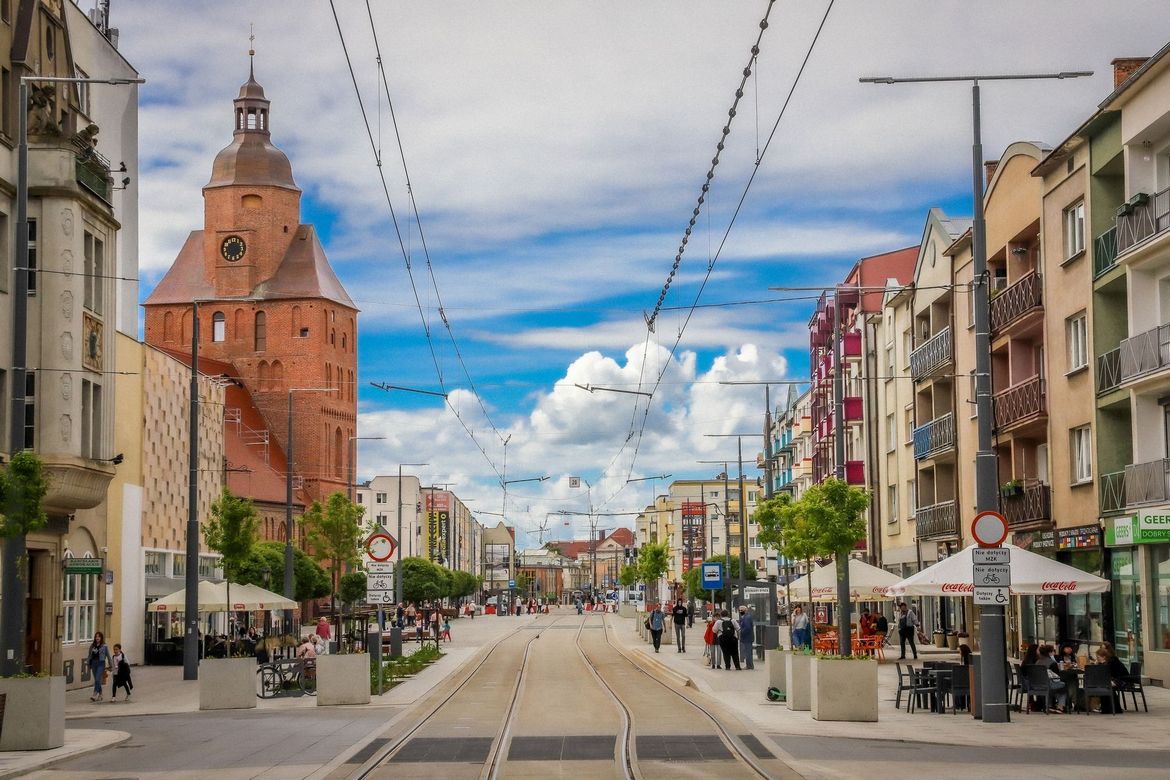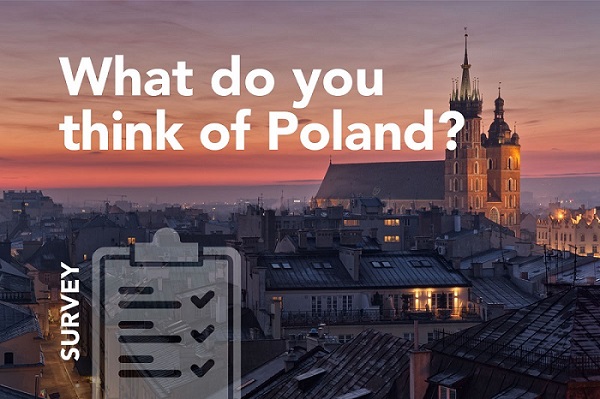Gorzow Wielkopolski
Gorzow Wielkopolski
The largest of he two capital cities of Lubuskie province, Gorzów Wielkopolski, welcomes with a scenic, riverside location. Founded in the XIII century and built on the banks of the Warta River, it invites all the globetrotters in search of a vibrant, historical, and yet a rather unknown destination.
Original, Wholesome and Culturally Cool
The highpoint of a visit to Gorzów Wielkopolski is a stroll down the Warta Boulevard. This long, green, and serene pedestrian walkway runs along the riverbank the Warta River. It is split by just one street – Bolesława Chrobrego – and is separated from the hustle and bustle of the city center by a historical railway overpass, that happens to be the longest of its kind in Poland.
When the weather turns warm, the boulevard is adorned with potted palm trees, giving it that extra summery and tropical feel. There is something very captivating and gratifying about the ambiance on the boulevard. The river breeze carries the jazz tunes and the unmistakable sound of old-fashioned street organs played by local buskers, all that blends with mouth-watering and savory aromas emanating from food stalls lining up this magnificent boardwalk.
Keeping with the city’s maritime tradition, one dining option is that onboard the Królowa Jadwiga barge moored at the wharf. Other attraction includes a river trip on the oldest icebreaker in Poland, the 135-year-old Kuna.
At the edge of the boulevard, you will find one of Gorzów’s well-known street projects. This one is a life-size statue of Paweł Zacharek, a well-respected local ferryman. The ferryman’s boat is large enough to accommodate a very close-up and personal selfie with the captain.
Finally, the nearby public beach is simply perfect for some relaxed sunbathing.
From the Middle Ages to Art Nouveau
The impressive, red-bricked 13th-century Cathedral of the Assumption of the Blessed Virgin Mary is regarded as the most symbolic, iconic and important building in Gorzów Wielkopolski. With its Renaissance-Mannerist main altar in the form of a triptych, the church remains the city’s most notable shrine.
Unfortunately, a 2017 fire damaged the 40m/131ft., defense tower, which once provided an unobstructed and gorgeous city view. Currently, the church is undergoing renovations and is closed to the public. Luckily, the construction work uncovered several artifacts from different periods in city history. These surprising discoveries included an early medieval knife, earthenware from the late Middle Ages, old nails, an 18th-century coin, manuscripts, and music scores
The intriguing and fascinating yet turbulent history of the city is shared between Poland and neighboring Germany. In the early medieval period, the area at the mouth of the Warta River was ruled and owned by the Western Polans. Later, during the feudal fragmentation of Poland, the settlement passed into the hands of the Brandenburg margraves, then to the Bohemian Crown to be subsequently sold to the Teutonic Order, ending up as Landsberg of Prussia and finally that of Germany until 1945 and the end of World War II.
There are plenty of historical reminders from the time when Gorzów was Landsberg. Some of those notable structures include the fountain located right next to the cathedral in the Old Market Square. The fountain founded by industrialist Hermann Paucksch features a figure of a female water carrier, popularly called Bamberka, who symbolizes the perseverance of the local populace and the life-giving and sustaining nature of the Warta River.
The streets of the Old Town are lined with eye-catching examples of Secession (Art Nouveau) style tenements houses, featuring characteristics plant and animal motifs typical to this type of architecture. Among the several Secession houses that once belonged to Landsberg factory owners, the most outstanding include both Max Bahr’s villa, which today houses the Bishop Wilhelm Pluta Institute and Gustav Schroeder’s villa, nowadays the main building of the Lubusz Museum. One of the museum’s departments is housed in the historical granary and features a model of 17th-century Landsberg that provides an excellent illustration of the city’s rich history and layout.
A City with Affection for Culture
Visitors wishing to broaden their cultural horizons are welcome to the renowned Juliusz Osterwa Theatre. The theatre’s literary directors have included Zdzisław Najder and Zbigniew Herbert, it witnessed the debuts of Agnieszka Holland (as a theatre director), Stanisław Syrewicz (as a composer of theatre music) and Edward Lutczyn (as a stage designer). It also welcomed distinguished guests such as Andrzej Wajda, Józef Szajna, and Stanisław Grochowiak. For several decades now, the theatre has also organized the hugely popular Gorzów Theatre Meetings.
The Gorzów Philharmonic is one of the newest classical music venues in Poland. Opened in 2011, the ultramodern glass and steel architectural design, reminiscent of an organ emerging from a round table, houses an equally innovative interior – in terms of technology and acoustics – with auditoriums seating almost 600 people. One of the philharmonic’s regular key musical events are the popular Chopin Picnics.
Gorzów Wielkopolski is a gracious host to a myriad of other cultural events. Some of the most notable of these include Gorzów Days, Night Culture Trail, End of Summer Party, DYM Festival, Festival of Compelling Films, Alte Kameraden International Brass Band Festival, Getting Out Festival, International Gypsy Festival “Romane Dyvesa.”, and the National Monodrama Festival.
Parks, Statues and Motorcycle Speedway
The Wiosny Ludów Park, also known as the Rose Park due to its stunning rose gardens, is the staple greenspace in the city. Its paths are lined with 100-year-old red horse-chestnut trees, and you can even take a kayak ride on the pond. It really is the perfect place to walk, recharge, and rest. The park holds some of Gorzów’s most noteworthy statues.
The first is an outdoor sculpture portraying the Gorzów Brass Band, which performed 3,500 times and won many prestigious awards during its 60-year existence. The other statue is that of a Romani poet Papusza, who used to sit and rest in the park. A few years ago, her story was told in the film Papusza, directed by Joanna Kos-Krauze and Krzysztof Krauze and starring Jowita Budnik.
Close to the Park 111 shopping center on Sikorskiego Street, another statue of a local character can be found, and this one comes with an amusing back story to match. Szymon Gięty, not his real name though, was an oddball vagabond, wanderer, a recyclables collector, and keen storyteller. He was best known for his May Day parade antics ridiculing and mocking the communist authorities.
Motorcycle track racing is a big deal in Gorzów. No wonder the city is home to a statue of Edward Jancarz perching on his race bike. A multi-use stadium in Gorzów is named after this legendary speedway racer.
Then there is also the entirely nude, or sometimes not, an iron sculpture of Śfinster, the Witches’ Well, which stands as a memorial to local women accused of witchcraft and burned at stake. You will also find a replica of a historical Landsberg tram.
If you are still looking for more adventures, try Nordic walking in the Słowiański Park, a bit of leisure at the marina, or just some good live music at the respected Pod Filarami Jazz Club, where Nigel Kennedy had played.
Being bored is just not part of the plan in Gorzów Wiekopolski.

